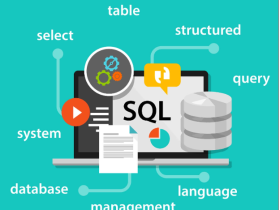Introduction
In the world of data analysis and manipulation, Pandas is a popular library among Python enthusiasts. Its powerful DataFrame structure allows for efficient handling and transformation of data. However, working with Pandas DataFrames can sometimes be complex, especially for beginners. That’s where bamboolib comes into the picture. In this article, we will explore bamboolib, a GUI (Graphical User Interface) tool that simplifies the process of analyzing and manipulating Pandas DataFrames.
What is bamboolib?
Bamboolib is an open-source Python library built on top of Pandas, providing a user-friendly interface to interact with DataFrames. It aims to simplify the process of data analysis, making it more accessible to users with varying levels of programming experience. Bamboolib integrates seamlessly with Jupyter Notebook, JupyterLab, and JupyterHub, allowing users to leverage its functionalities within their familiar environments.
Benefits of using bamboolib
- Improved Productivity: Bamboolib reduces the learning curve associated with Pandas by providing an intuitive interface, allowing users to focus more on analysis and less on syntax.
- Interactivity: With bamboolib, users can visually explore and manipulate their data using point-and-click operations, making it ideal for those who prefer a visual approach to data analysis.
- Reproducibility: Bamboolib generates Python code for each operation performed, enabling users to reproduce their analysis easily and share it with others.
Features of bamboolib
- Intuitive GUI: Bamboolib offers a user-friendly interface with interactive widgets, allowing users to perform various operations on their DataFrames effortlessly.
- Data Exploration: Users can quickly explore their data by filtering, sorting, and aggregating it using simple mouse clicks.
- Visual Data Analysis: Bamboolib provides a range of interactive charts and plots, enabling users to create insightful visualizations with just a few clicks.
Getting started with bamboolib
To begin using bamboolib, follow these steps:
- Installation: Install bamboolib by running
pip install bamboolibin your Python environment. - Importing Libraries: Import bamboolib and Pandas in your Jupyter Notebook or Python script using the following code:
import bamboolib as bam
import pandas as pd
- Loading Data: Load your data into a Pandas DataFrame using
pd.read_csv()or any other suitable method.
Loading data into bamboolib
Once you have your data loaded into a Pandas DataFrame, you can load it into bamboolib for analysis. Simply use the following code:
df = bam.DataFrame(your_dataframe)
Exploring and analyzing data with bamboolib
Bamboolib provides several features to explore and analyze your data easily. Some of the key operations include:
- Filtering Data: Use the filter widget to select rows based on specific conditions.
- Sorting Data: Sort your data by one or more columns in ascending or descending order.
- Grouping and aggregating data: Group your data based on one or more columns and apply aggregate functions like sum, mean, count, etc.
- Data Transformation: Transform your data by applying mathematical operations, creating new columns, or applying custom functions.
Visualizing data with bamboolib
Data visualization is a crucial aspect of data analysis, and bamboolib offers a range of interactive charts and plots to visualize your data. Some of the visualization options available include:
- Bar Charts: Create bar charts to represent categorical data and compare different categories.
- Line Charts: Plot time series or continuous data using line charts to identify trends and patterns.
- Scatter Plots: Visualize the relationship between two variables using scatter plots to identify correlations.
- Histograms: Analyze the distribution of a numerical variable using histograms.
Data cleaning and preprocessing
Data cleaning is an essential step in the data analysis process, and bamboolib provides convenient tools to handle common data cleaning tasks, such as:
- Missing Data Handling: Identify missing values and choose to drop them, fill them with a specific value, or interpolate them.
- Data Type Conversion: Convert columns to different data types, such as converting strings to numbers or dates.
- Removing Duplicates: Identify and remove duplicate rows from your DataFrame.
Advanced data analysis with bamboolib
Bamboolib also offers advanced features for in-depth data analysis. Some of these include:
- Statistical Analysis: Perform statistical calculations on your data, such as descriptive statistics, correlations, and hypothesis testing.
- Machine Learning Integration: Integrate bamboolib with popular machine learning libraries like scikit-learn to build and evaluate predictive models.
- Time Series Analysis: Analyze time series data using specialized tools like moving averages, seasonal decomposition, and forecasting models.
Conclusion
Bamboolib serves as a valuable GUI tool for simplifying the process of analyzing and manipulating Pandas DataFrames. Its intuitive interface, interactivity, and visual data analysis capabilities make it a powerful asset for data professionals and beginners alike. By leveraging bamboolib’s features, users can streamline their data analysis workflows and focus on deriving meaningful insights from their data.










Leave a Reply